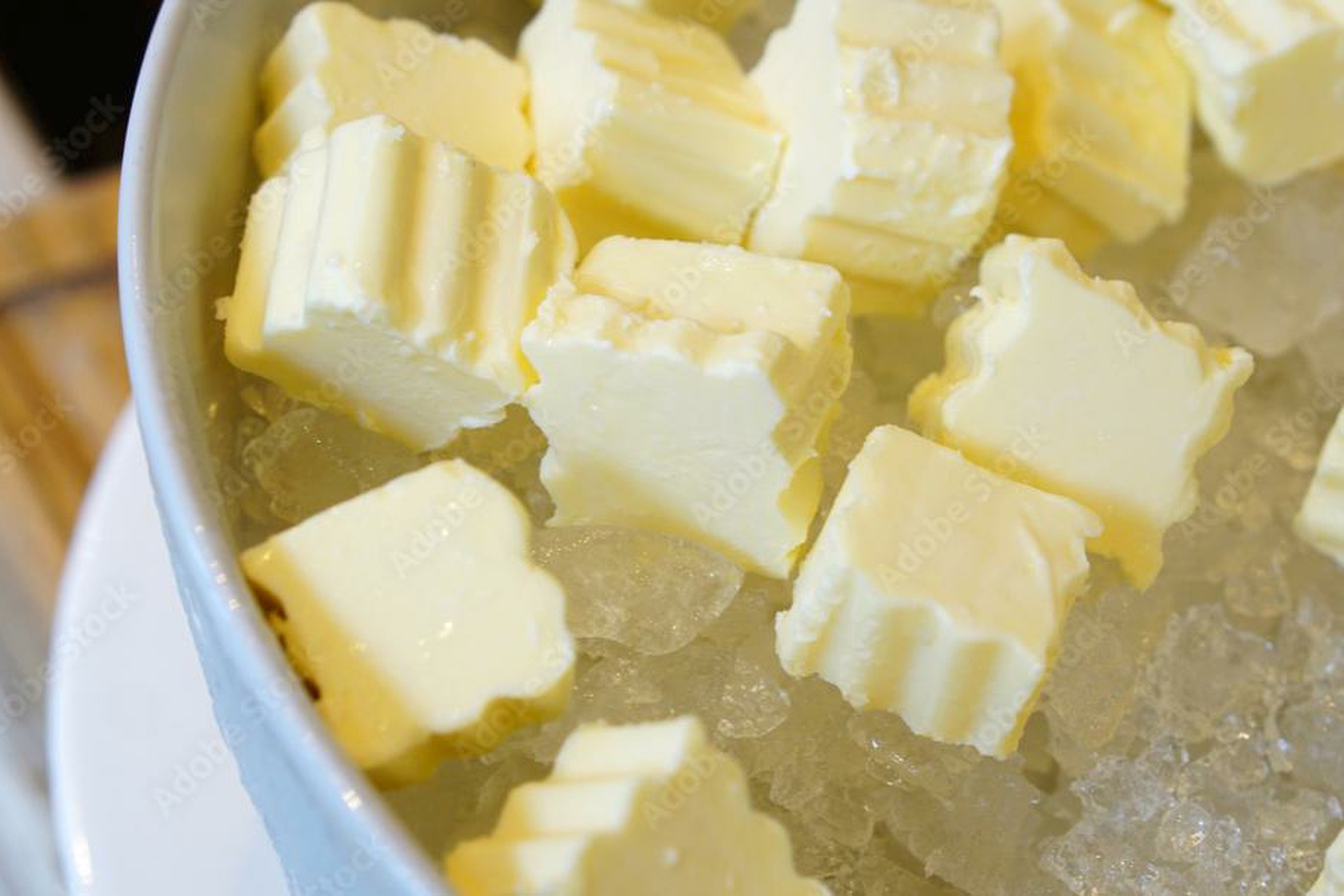
The breakfast buffet mystery
" as a proud Belgian I take my butter seriously "
Frederik Haentjens, Chargé de Presse of the Bailliage of United Arab Emirates based in Dubai, has been contemplating why hotels put butter on ice!
Here’s a question for you: why is butter served on ice at hotel buffets?
No, seriously, have you ever stopped to think about it? I’ve been staying in hotels for years and every time I go down to breakfast I see it, little pats of butter perched on a bed of ice, hardened to the point of being nearly weaponized. It’s like they want me to eat butter-cubes instead of spreadable goodness. And don’t get me started on trying to spread that frozen block on a piece of bread - it’s not happening!
Now, as a proud Belgian I take my butter seriously. In fact, spreading butter on bread in the morning feels like a national pastime. It’s part of my DNA. So, imagine my horror when I’m faced with something that resembles butter-flavoured granite instead of that creamy, smooth delight I’m used to. I mean, the whole point of butter at breakfast is to spread it, right? Not to chisel it.
The great butter debate: to ice or not to ice?
Here’s where the irony lies. Buffets seem to have adopted this baffling practice of serving butter cold under the fear that it will melt into an unsightly puddle if it’s left at room temperature. But let's talk science for a minute. Butter doesn’t melt that quickly, does it? Not at a breakfast buffet’s typical room temperature of 22 degrees Celsius (that’s around 72 Fahrenheit for those of you keeping track). At that temperature, butter may soften - perfect for spreading - but melt? Highly unlikely.
What is happening here? Why this obsession with chilling the life out of butter? Is this about quality or tradition? Is hotel butter so delicate and rare that it must be preserved on a bed of ice, like it’s some kind of endangered species?
Butter: A deep dive into creamy goodness
Let’s break down the butter conundrum. Not all butter is created equal. The composition of butter - specifically the balance of fat and water - affects how fast it melts, how it spreads, and crucially, whether it needs to be encased in a mini-igloo of ice. Good-quality butter, the stuff that’s rich in butterfat, will soften gracefully at room temperature, making it a dream to spread. Lower-quality butter, with more water content, tends to be a little more “temperamental”. It might melt faster, which could explain why some hotels feel the need to chill it.
But here’s the thing: when butter is kept too cold, it loses its delightful spreadability. You end up tearing your bread apart as you desperately try to distribute the butter evenly. It’s a scene, trust me. If the butter was just allowed to sit out and soften at room temperature, none of this tragedy would occur. And besides, if the butter is wrapped in those little foil containers (as it often is), the chance of it turning into a molten mess is slim to none.
Spreadable butter: A modern solution?
Then we come to the era of “spreadable” butter, designed to stay soft and easy to spread straight from the fridge. It’s a modern invention and many people swear by it. But is it real butter? That’s where the debates start. Traditionalists argue that adding oils to make butter spreadable compromises its purity. I mean, why mess with perfection? Sure, spreadable butter is convenient, but it’s no match for the real deal - a high-quality block of butter that’s been left out long enough to soften naturally.
But again, that takes us back to the original question: if spreadable butter exists, why don’t hotels just serve that? Why must we continue the charade of butter on ice? Who decided that guests should be subjected to butter that requires a jackhammer to use?
The ice problem: When butter becomes a brick
I can’t help but think about all the effort that goes into creating a hotel buffet - the perfect display of cheese, fruits, pastries - and then they ruin the experience by freezing the butter into oblivion. What’s the thought process here? Is it purely aesthetics? Does butter sitting on ice look more elegant? Are they worried that guests will revolt at the sight of a soft, room-temperature butter? More likely, it’s just an overcautious precaution.
Now, I get it, no one wants to encounter a pool of melted butter at breakfast. But I challenge any hotel to find a butter that will turn to liquid in 22-degree conditions within an hour or two. You’ll end up with perfect, spreadable butter if you just let it breathe.
Let’s get real: Why butter on ice is outdated
At the end of the day, this whole butter-on-ice situation feels like an outdated tradition. It’s time to free the butter from its icy tomb and let it breathe at room temperature, where it can do what it was meant to do: spread smoothly on toast, croissants and pancakes.
So, what’s the takeaway from all this butter talk? Butter, like all good things in life, needs a little patience. It doesn’t need to be suffocated under a mountain of ice. Let it sit out for a bit, soften, and do its thing. Trust me, your breakfast experience will be all the better for it.
Rediscovering a perennial northeastern Thailand favourite